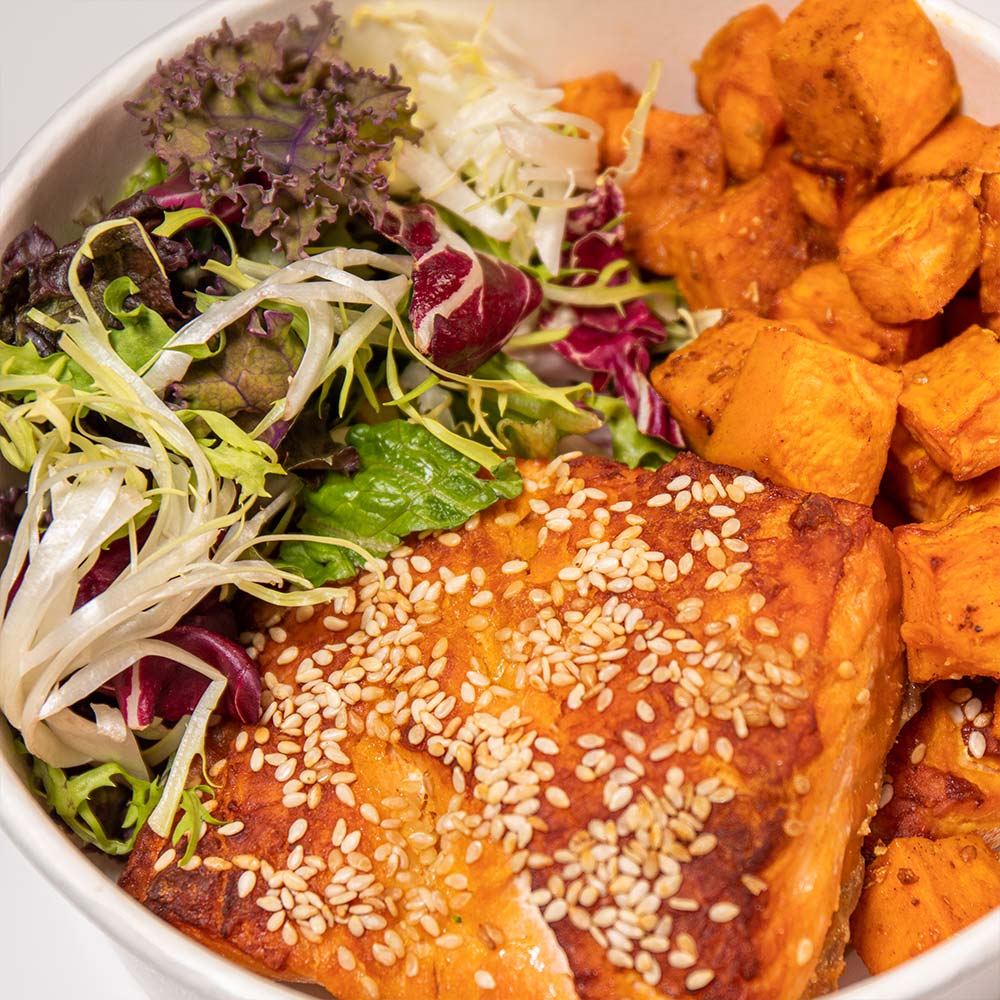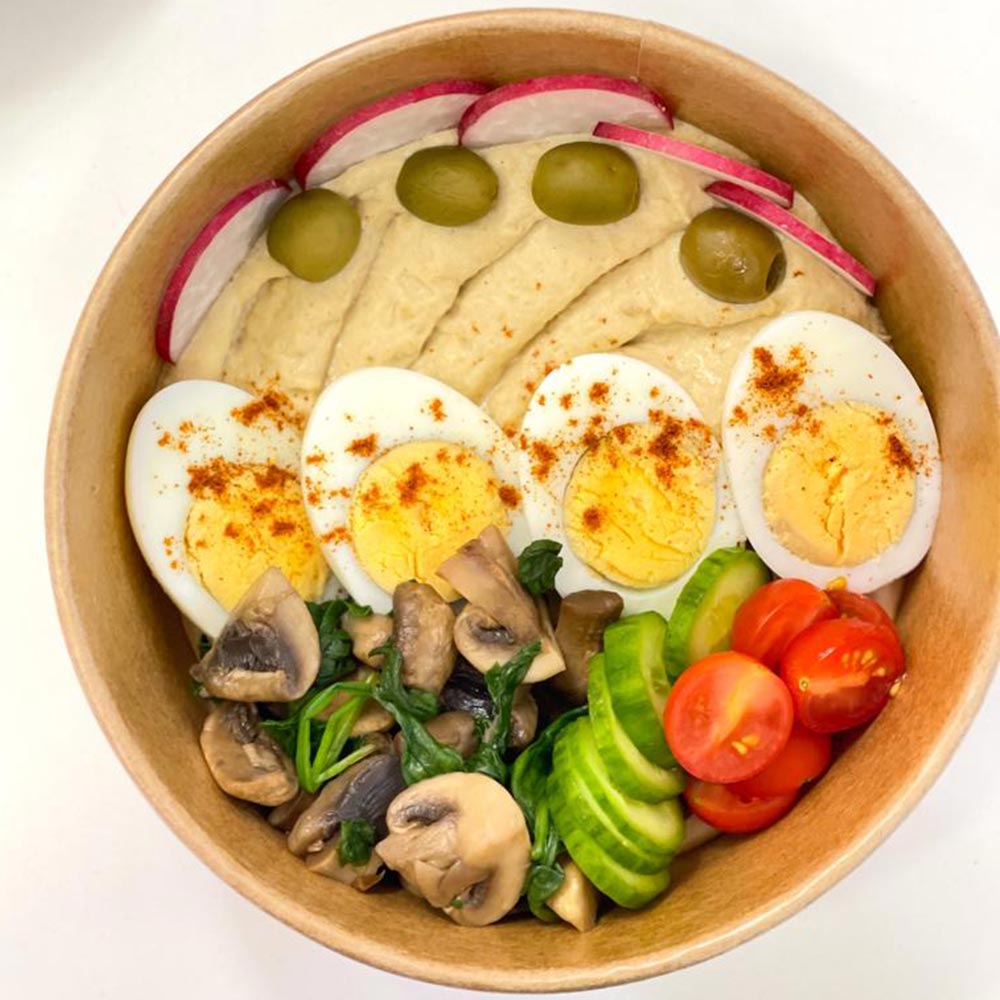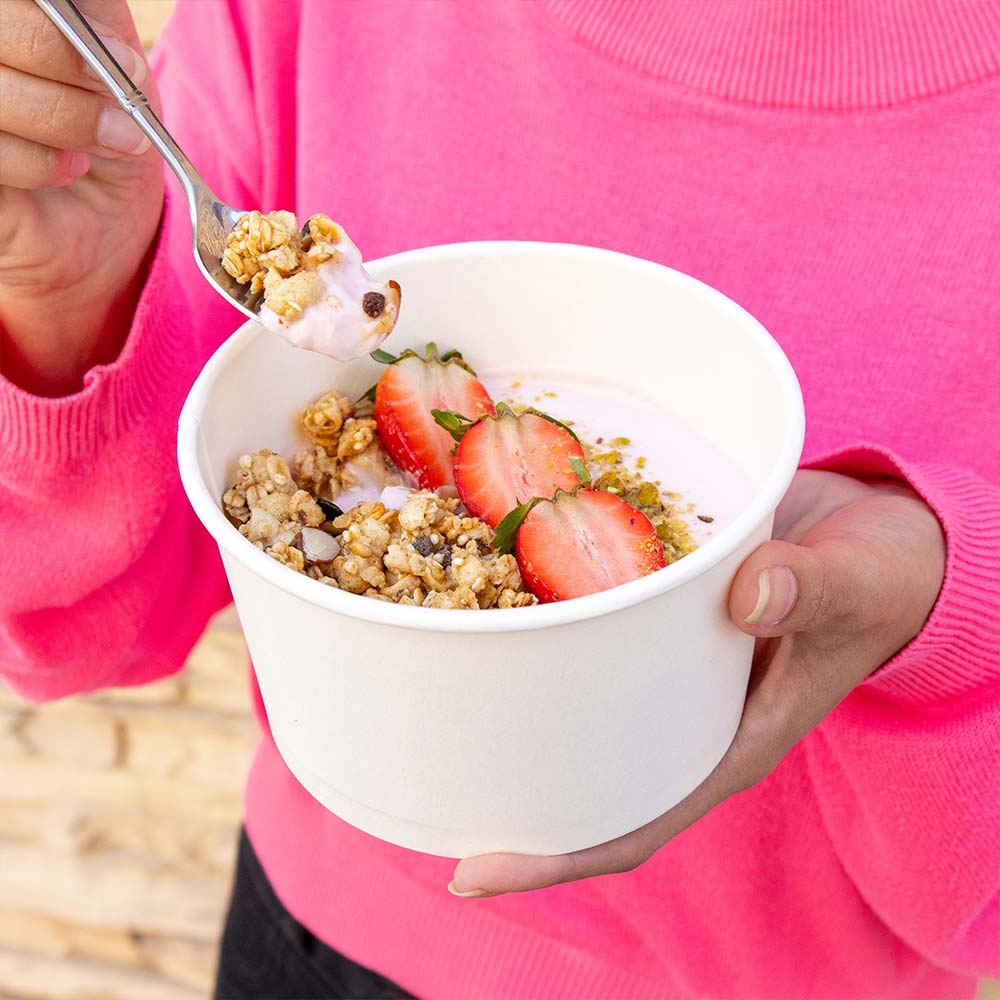There are many factors to take into account when creating meal plans for athletes, including monitoring macronutrients and hydration levels. Continue reading to learn the finest advice on creating an athlete's diet plan that will maximize performance.
Your clients can feel encouraged and guided to make the most suitable choices for their well-being and health objectives by using effective and practical meal plans. Despite the fact that meal plans are beneficial for everyone, athletes need them even more because the timing of nutrients is essential for optimum performance.
However, how can you design an athlete food plan that would enable your customers to achieve their performance objectives?
Thankfully, there are several diet plans and workout regimens available, with options for any athlete.
The diets listed in this article satisfy the following criteria:
1. nutritiously sound. These menus are well-balanced and offer nutrients that might be particularly advantageous for athletes.
2. Sustainable. These strategies are safe to follow for a long time. They don't impose undue restrictions.
3. Effective. Research has shown that these programs, or elements of them, are successful, and it is possible that athletes, in particular, will benefit from them.
4. Simple to follow. They have guidelines that are crystal clear and easy to follow.
The information you need to make a meal plan for athletes, including information on energy needs and macronutrients, is provided below. Here are the top 8 diets and exercise regimens for athletes.

Energy Needs For A Food Plan For Athletes
The amount of calories someone consumes will depend on their activity level, age, gender, and goals. For instance, depending on exercise levels and age, women's daily energy requirements might range from 1,600 to 2,400 calories, and men's daily energy requirements can range from 2,000 to 3,000 calories.
However, these figures should be modified if your customer desires to gain or reduce weight. The BMR equation can be used to determine your client's energy requirements in more detail.
Macronutrient Summary In An Athlete's Food Plan
A decent meal plan for athletes involves the proper ratio of macronutrients in addition to catering to their calorie requirements.
There are some broad recommendations for carbohydrates, protein, and fat, though this can look different for each individual. To understand how these affect performance, let's take a closer look at each one.
Carbohydrates:
Carbohydrates are the only kind of macronutrient that can be metabolized quickly enough to give energy during times of high-intensity activity.
In general, carbohydrate consumption for general training needs ranges from 5-7 g/kg of body weight/day and from 7-10 g/kg of body weight/day for the higher needs of endurance athletes.
It's interesting to note that research has shown that many athletes don't get enough carbs to adequately restore their muscle glycogen reserves. By recommending a range of foods, you can urge your clients to consume enough carbohydrates to power their workouts as a dietitian.
Here are some food items with lots of carbohydrates that you can add to meal plans for athletes:
Fruits Vegetables (squash, broccoli, leafy greens, and sweet/white potatoes)
- wholesome crackers or bread
- cereals rich in fiber
- Quinoa
- Brown rice

Protein:
Protein is a crucial macronutrient that contributes significantly to satiety, muscle mass, and strength. Making ensuring your client consumes enough of this macronutrient is therefore crucial, especially if they want to improve performance.
The following is the adult* Dietary Reference Intake (DRI) for protein:
Protein intake for both sexes is 0.8 g/kg of body weight per day.
1 to 1.2 g of protein/kg of body weight per day for people over 65.
1.4–2.0 g protein/kg body weight/day for athletes and people who are physically active, depending on training needs and objectives.
*Depending on your client's activity level, age, and other demands, these figures may change.
In addition, doctors advise consuming 1.2–1.7 g of protein per kilogram of body weight every day to help build muscle.
Consider including the following high-protein meals in your meal plan for athletes' nutrition:
- Eggs
- Greek yogurt, milk, cottage cheese, and cheese are examples of dairy products.
- fatty red meats
- Poultry Fish
- Tofu Lentils
- legumes and beans
- Almond butter
- Protein powder should be consumed in addition to full foods.
Fats:
Fats are not all created equally. Healthy fats (such as omega-3s, mono- and polyunsaturated fats) may help lower LDL cholesterol, raise HDL cholesterol, reduce the risk of heart disease, fight inflammation, and promote satiety. Saturated and trans fats, on the other hand, have been linked to negative health consequences.
Although there is no RDA for this macronutrient, it is advised that athletes consume 30% of their daily calories from healthy fats. Here are a few illustrations of good fats to incorporate into your client's diet:
- Avocados, nuts, and seeds
- Salmon and fatty fish with olive oil

Electrolyte And Hydration Requirements:
Athletes' performance might be impacted by their level of hydration.
If fluids are not replaced after exercise, someone may feel dehydrated, disoriented, and nauseous. Make sure your client keeps hydrated before, during, and after a workout because dehydration can impair exercise performance and have hazardous health effects. Getting enough fluids also lowers cardiovascular stress, improves recuperation, and helps the body control its temperature.
Dehydration can cause fatigue, decreased endurance, and problems controlling body temperature. Athletes can lose 6–10% of their body weight in water through sweat.
Various guidelines exist for daily fluid intake. However, research indicates that endurance athletes should weigh themselves to measure fluid loss and should keep losses to 2-3% when exercising for more than 90 minutes.
Water is the finest hydrating option. But because they combine water (for hydration), carbs (for quick-burning fuel), and electrolytes (to replace those lost in sweat), sports drinks can be helpful.
Energy Meal Plans Dubai’s Top Diets for Sportsmen:
1. Overall best: Mediterranean-style diet
The historic diets of nations like Italy, Spain, and Greece are the inspiration for the Mediterranean diet.
It discourages the consumption of processed foods and promotes the consumption of fruits, vegetables, whole grains, and heart-healthy fats like olive oil, nuts, and seeds.
Iron, magnesium, and calcium are just a few of the elements that are abundant in these foods and are particularly crucial for athletes.
Additionally, several studies have discovered a connection between increases in physical fitness and sports performance and eating a Mediterranean-style diet.
2. A Flexitarian Diet Is Ideal For Males.
Flexitarianism, which is also sometimes referred to as semi-vegetarianism, is a diet that emphasizes plant-based foods such as fruits, vegetables, whole grains, legumes, nuts, and seeds.
Contrary to vegan and vegetarian diets, it does, however, permit a small amount of animal products such as meat, fish, and fowl.
The store of glycogen, a type of carbohydrate present in muscles and used as a rapid source of energy, may increase with plant-based diets, which may also assist to improve body composition, blood flow, inflammation, and other factors.
When combined with physical training, it may also be simpler to meet your protein demands because it is less restrictive than traditional vegetarian diets.
Additionally, it can aid in lowering a number of heart disease risk factors. Men may benefit the most from this because they may be more likely than women to get heart issues.

3. The DASH diet is ideal for women
The National Institutes of Health were the primary developer of the heart-healthy diet known as the Dietary Approaches to Stop Hypertension (DASH) diet.
Whole foods that are high in nutrients are encouraged in the diet, such as fruits, vegetables, lean proteins, whole grains, and low-fat dairy.
The DASH diet is not only balanced and full of essential nutrients, but it may also be particularly advantageous for female athletes, who are often more likely to be affected by bone problems including osteopenia and osteoporosis.
In order to support bone health, the DASH diet actually advises adherents to consume foods high in calcium, such as low-fat dairy. The DASH diet, according to studies, may aid in boosting bone density.
4. A Paleo Diet Is Ideal For Gaining Muscle.
The paleo diet is based on what is thought to have been the typical diet of early hunter-gatherers during the Paleolithic period.
The diet excludes refined foods like grains, legumes, sugar, and the majority of dairy products but is high in protein from animals, fruits, vegetables, and healthy fats.
When paired with strength training, the diet, which is normally heavy in protein, maybe a suitable choice to aid in promoting muscle growth.
Even more, research has indicated that eating a lot of protein may help to reduce body fat and improve body composition.
There are a number of alternatives to the paleo diet if you find it to be excessively restrictive or challenging to adhere to. These include adaptations of the paleo diet that permit gluten-free cereals and grass-fed butter.
5. Noom Plan for Weight Loss.
The best diet program for weight reduction is Noom Noom, a mobile app that encourages behavioral adjustments to help you lose weight permanently and sustainably.
It requests information about your current diet and lifestyle when you join up by asking a series of questions. For athletes seeking a more individualized strategy that considers their training, this may make it a desirable alternative.
Access to your virtual coaching team is another benefit of membership, and it offers additional social support and inspiration.
Instead of completely eliminating some items, Noom advises her followers to consume nutrient-dense foods including fruits, vegetables, whole grains, and lean proteins.
Athletes with a busy schedule may find the program to be a wonderful fit because it is entirely online and only needs a smartphone.

6. The Nordic Diet Is Ideal For Endurance.
The traditional diets of Nordic nations including Finland, Iceland, Denmark, Sweden, and Norway are the foundation of the Nordic diet, a type of eating behavior.
Foods that are processed, refined, or high in added sugar are discouraged, while locally grown produce, whole grains, fish, low-fat dairy, and legumes are given priority.
The diet makes it possible to eat a variety of foods high in carbs, which can give endurance athletes a ton of long-lasting energy.
In fact, nutritionists frequently suggest that endurance athletes consume high-carbohydrate, simple-to-digest foods like fruit or yogurt to help fuel muscles while they are exercising.
The Nordic diet not only encourages these kinds of foods, but it also encourages foods high in protein and good fats to balance your diet.
7. Most Practical: Trifecta.
Consider ordering preprepared meals from Trifecta if you're searching for a quick approach to eat healthily and improve your athletic performance without spending a lot of effort on meal preparation.
This brand offers dishes with lean proteins, complex carbs, and wholesome vegetables that are tailored exclusively for athletes.
Organic veggies, wild-caught fish, grass-fed pork, and free-range chicken are just a few of the premium components used by the business.
Additionally, the program supports a variety of eating plans. It offers flexible subscription choices for paleo, keto, vegan, and vegetarian diets.
You can order certain things à la carte, such as protein packs that include processed meat, fish, or chicken, as a quick method to increase your protein intake while exercising.
8. Energy Meal Plans Dubai is the Best Meal Package.
Energy Meal Plans Dubai is a fantastic choice for athletes looking to enhance their physical performance and culinary skills by consuming more wholesome, home-cooked meals.
It's an organic meal kit company that offers all the materials you need, along with straightforward, step-by-step instructions, to make delicious, nutritious feasts at home.
The program offers a variety of menu options, including meal plans for Balanced Living, Plant-Powered, and Keto + Paleo.
Every meal comes with a list of components and comprehensive nutritional information, which may be helpful for athletes monitoring their intake of macronutrients.
whichever is your fitness objective, you can choose meals that are higher in protein, carbohydrates, or healthy fats when creating your weekly menu.
Five Suggestions For Designing An Athlete’s Diet Plan
After discussing macronutrient requirements and hydration requirements, let's talk about how you can use this knowledge to develop dietary regimens for athletes to help them achieve their performance objectives.
1. Variety is Essential.
While a meal plan for an athlete must include carbohydrates, protein, and fat, it's also critical to include a variety of foods that offer a wide range of nutrients.
For instance, try some oatmeal, berries, and a dollop of peanut butter for breakfast one morning instead of your usual egg whites, toast, and fruit. With so many options, your client will not only remain enthused about their meal plan but will also have access to a wide range of nutrients that will enhance both their overall well-being and athletic performance.
2. Take A Broader Perspective.
Instead of only offering a meal plan based on nutritional calculations, you should examine your customer as a complete. To guarantee that your nutrition care plan helps your client achieve their athletic goals, each meal plan should be customized for each individual athlete and updated on a frequent basis.
For instance, you would want to boost your client's intake of creatine if they are a serious weight lifter. However, you can think about increasing their carbohydrate consumption if you have a runner or a soccer player.
Furthermore, when making a meal plan, it is important to carefully consider how age, different activities, and personal goals all affect sports nutrition.
3. When Playing A Game, Stick To What You Know.
Have your clients maintain their regular diets rather than attempting new ones on game day. Athletes will be able to perform at their best because they won't suffer any unfavorable bodily repercussions (like an upset stomach).
Encourage your clients to bring a selection of snacks and beverages if they are going to an away game so they won't have to rely just on the venue's food options.
4. Have A Post-Exercise Strategy.
It's critical to include post-workout nutrition in your meal plans for athletes as it's essential for recuperation.
Research has shown that ingesting 20–40 g of top-notch protein within two hours of working out will trigger significant boosts in muscle protein synthesis. 0.8 grams of carbohydrates per kilogram of body weight have also been demonstrated to help replenish fuel reserves.
As always, don't forget to drink plenty of water as part of this strategy!
5. Discover What Suits Them.
To best optimize an athlete's diet, pay attention to how they feel, what's working and what isn't, and whether they have any additional food preferences. After all, a meal plan should always change to accommodate dietary requirements rather than being static. You can help your customers feel and perform their best by collaborating with them to optimize their diet.

How to Choose the Best Sports Diet.
Since you've got so many alternatives, it could be challenging to find a diet or program that suits you.
Consider whether or not you prefer a flexible program or a more structured program with clear limits for which foods are allowed when choosing a plan.
It's also critical to find a plan that takes your eating preferences and any other dietary limitations into account.
Take into account how effectively your diet aligns with your athletic objectives.
More protein can help build muscle mass when combined with resistance exercise, but more carbohydrates may be beneficial for endurance athletes.
One more thing: avoid plans that are incredibly restrictive, and yet of little benefit. It may be more difficult to meet your dietary needs if you follow them because they are eventually unsustainable.
Summary
Creating a meal plan for an athlete can be challenging, but with the right tools, you can offer a dietary assistance plan to help your customers increase their athletic performance. You should thoroughly evaluate your client’s needs, ambitions, and ages before developing any meal plans for athletes in order to better comprehend their requirements.
While athletes' demands for macronutrients and hydration are crucial, it's crucial to customize them to each athlete and collaborate with them to ensure the best nutrition assistance.






























